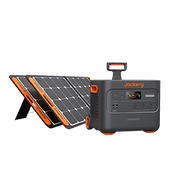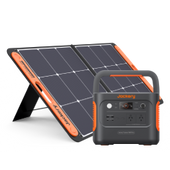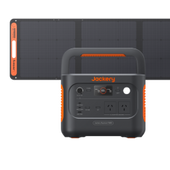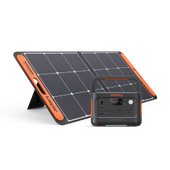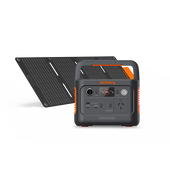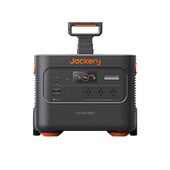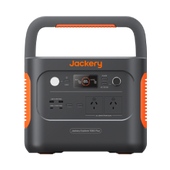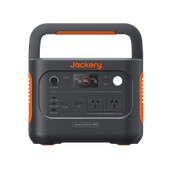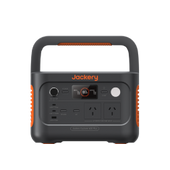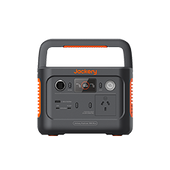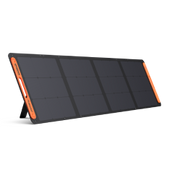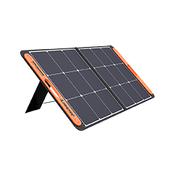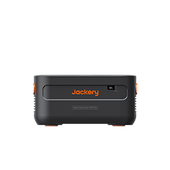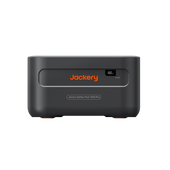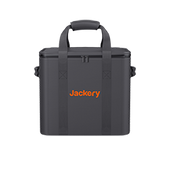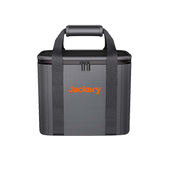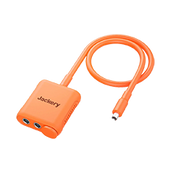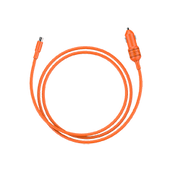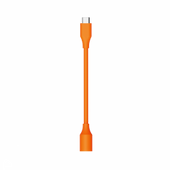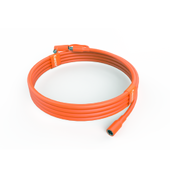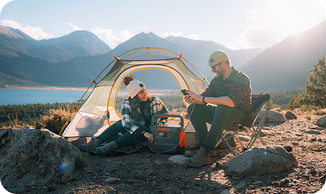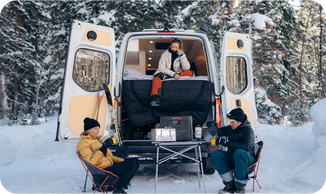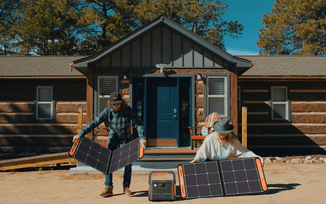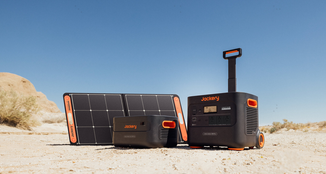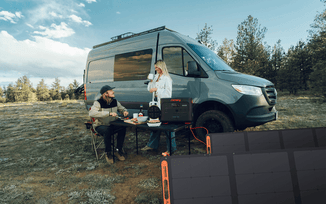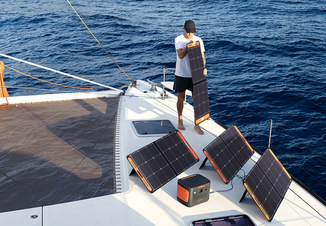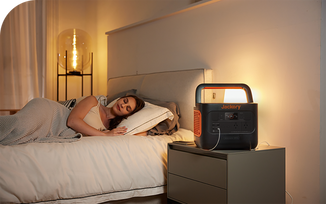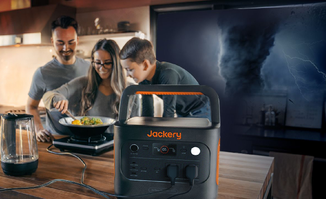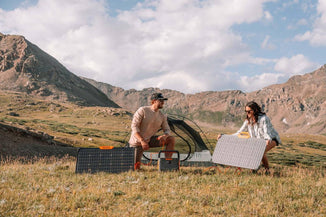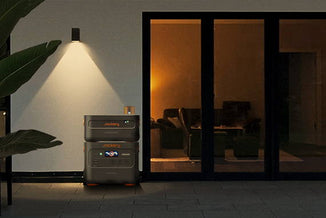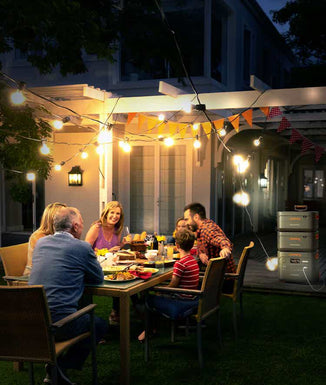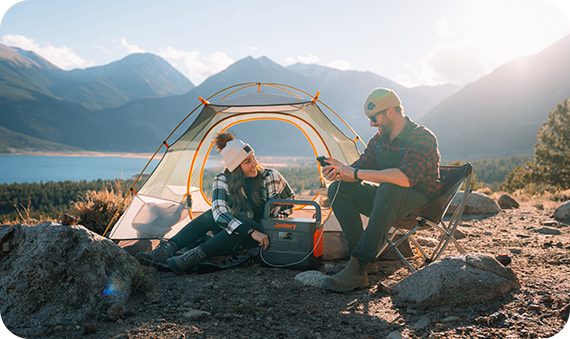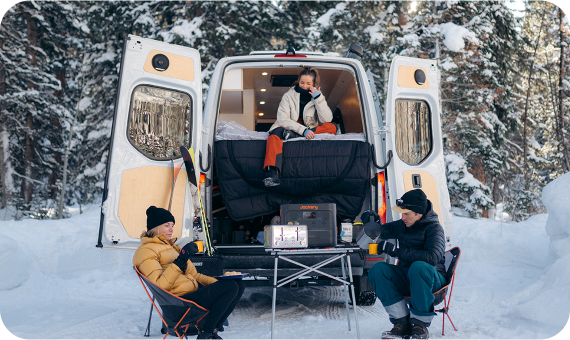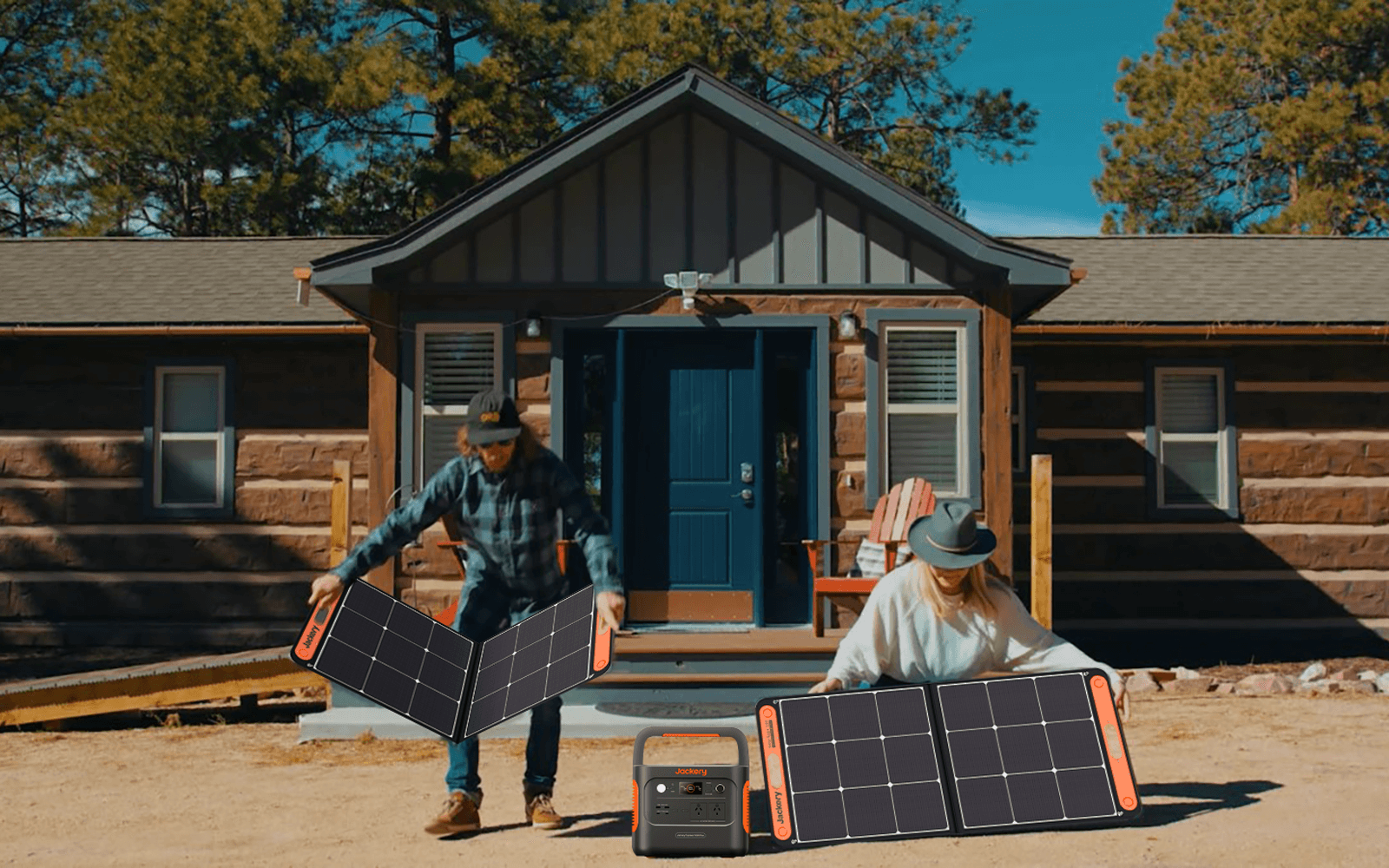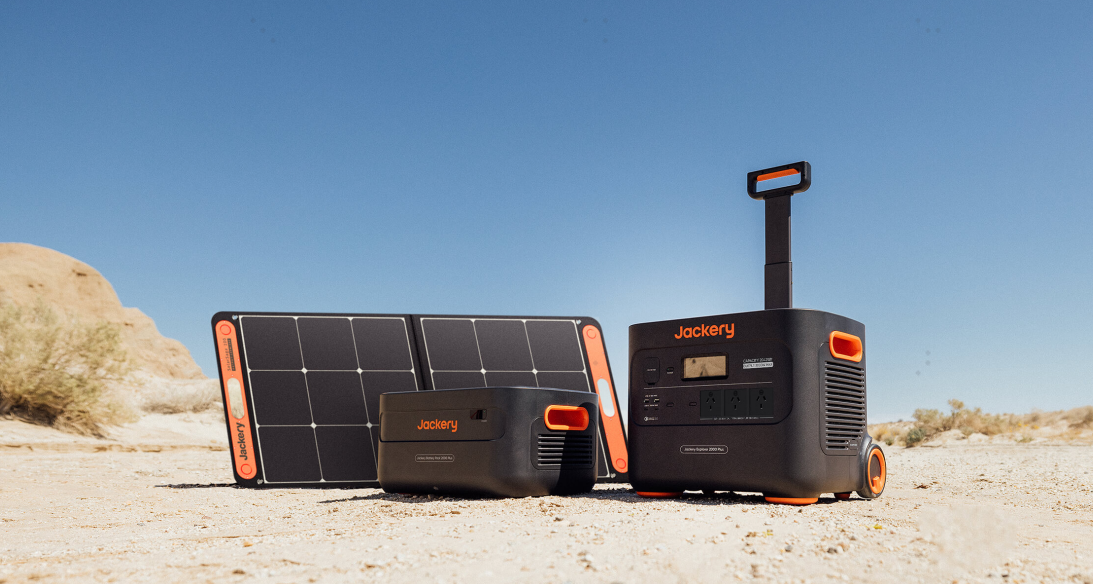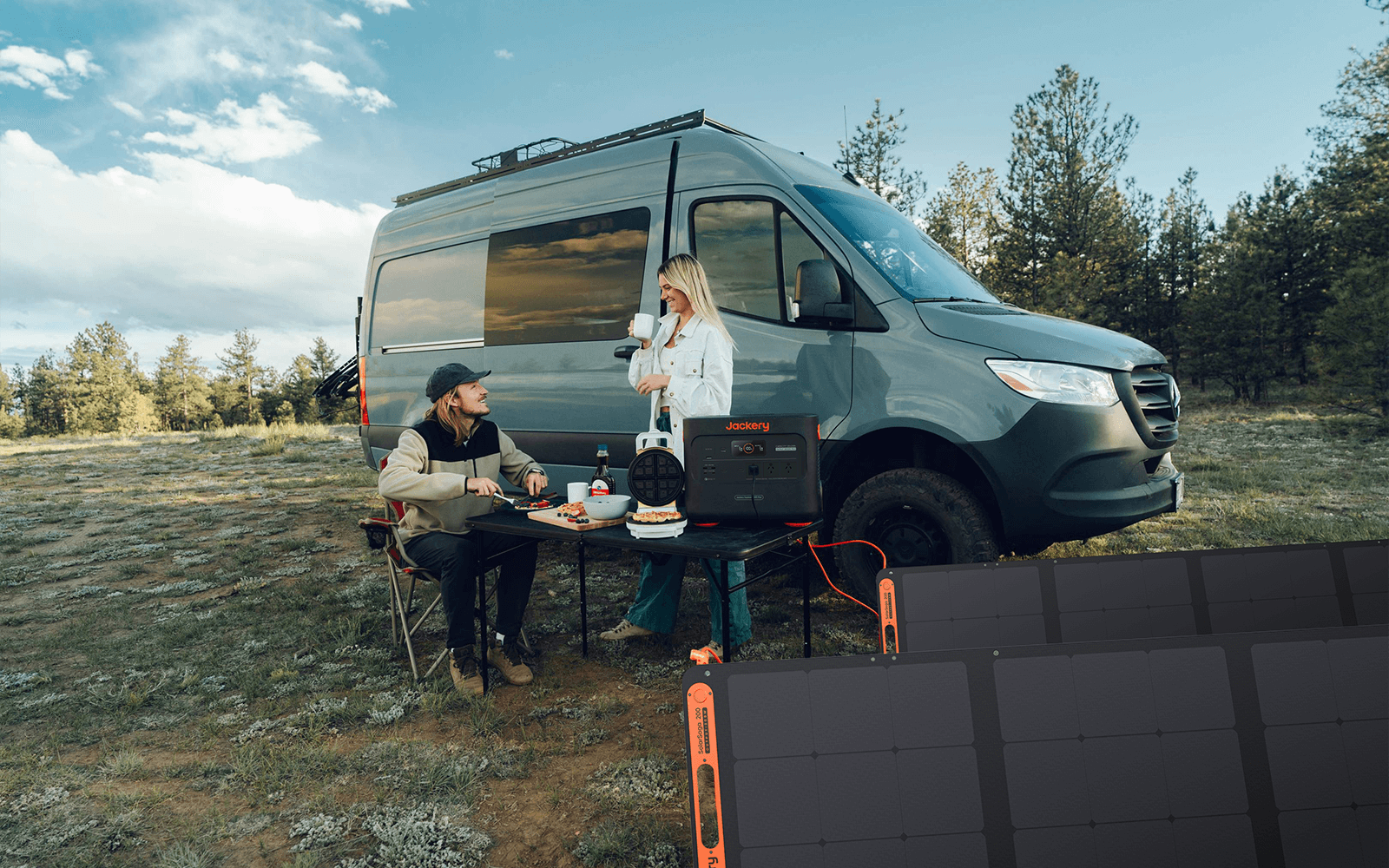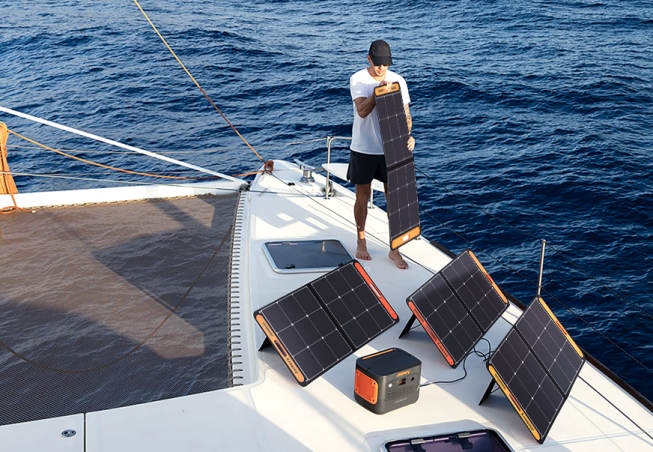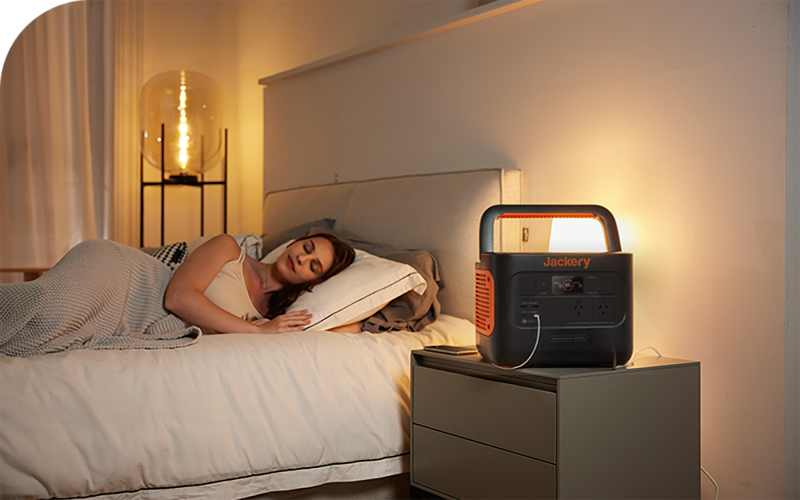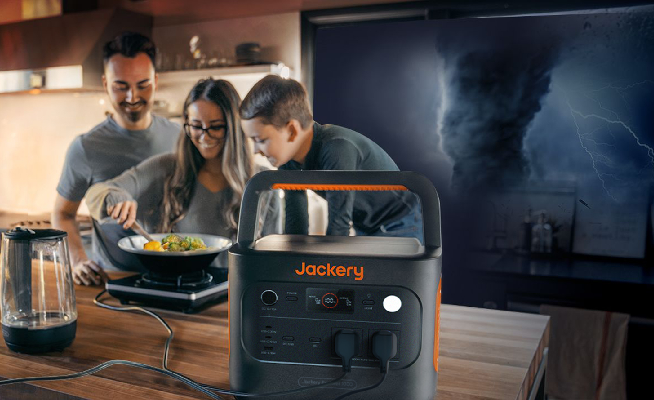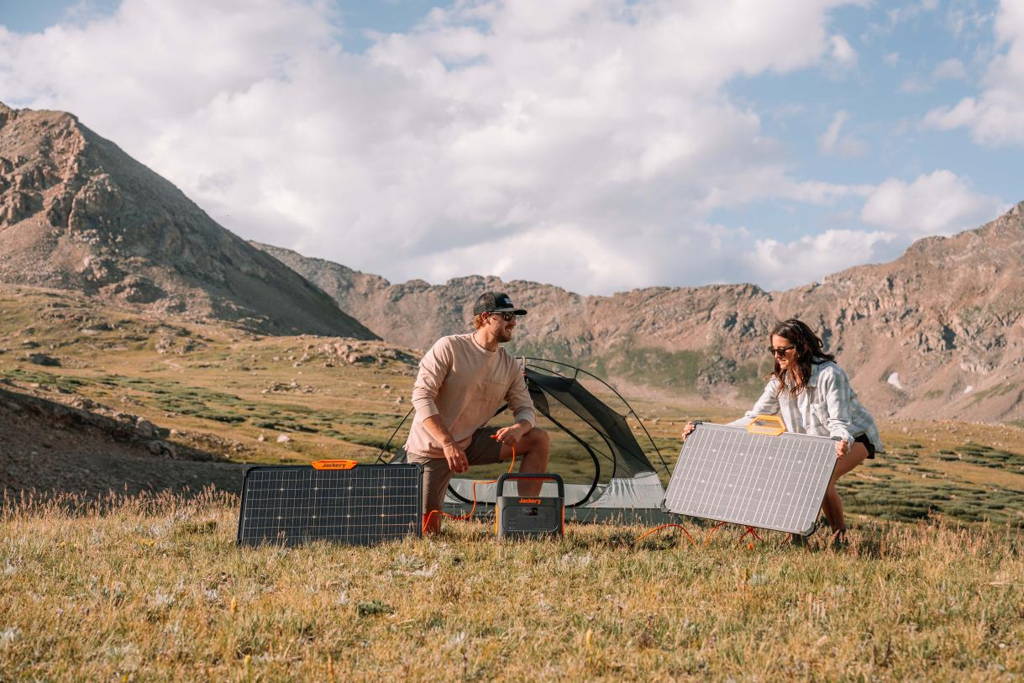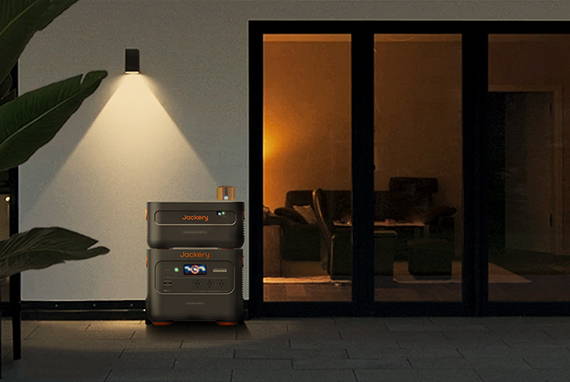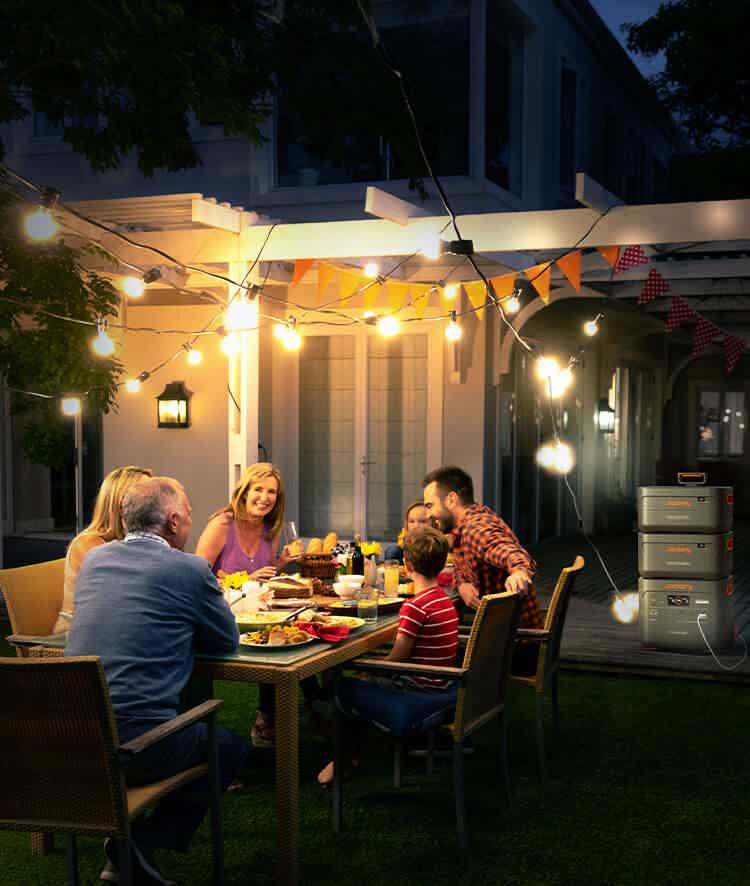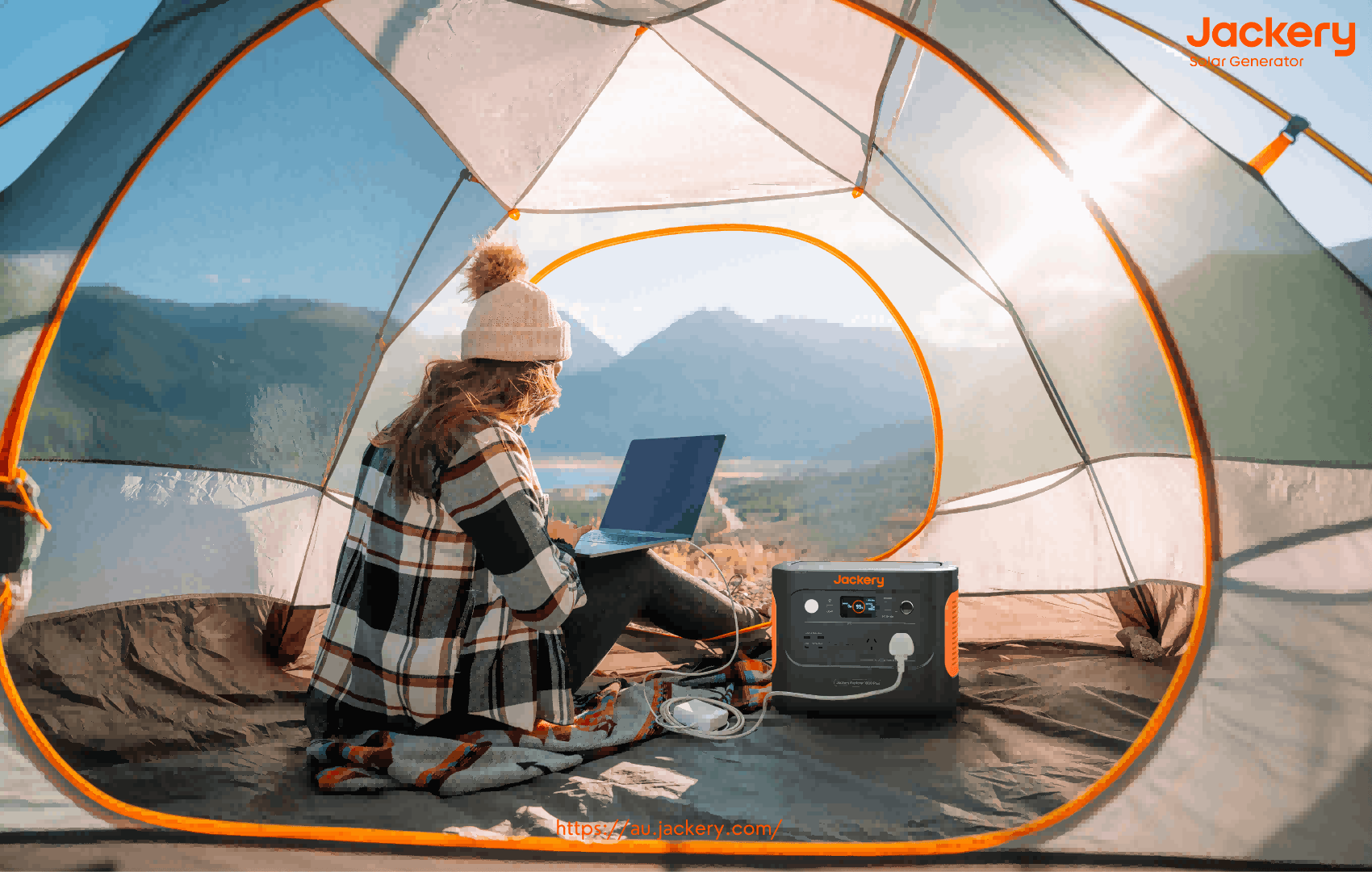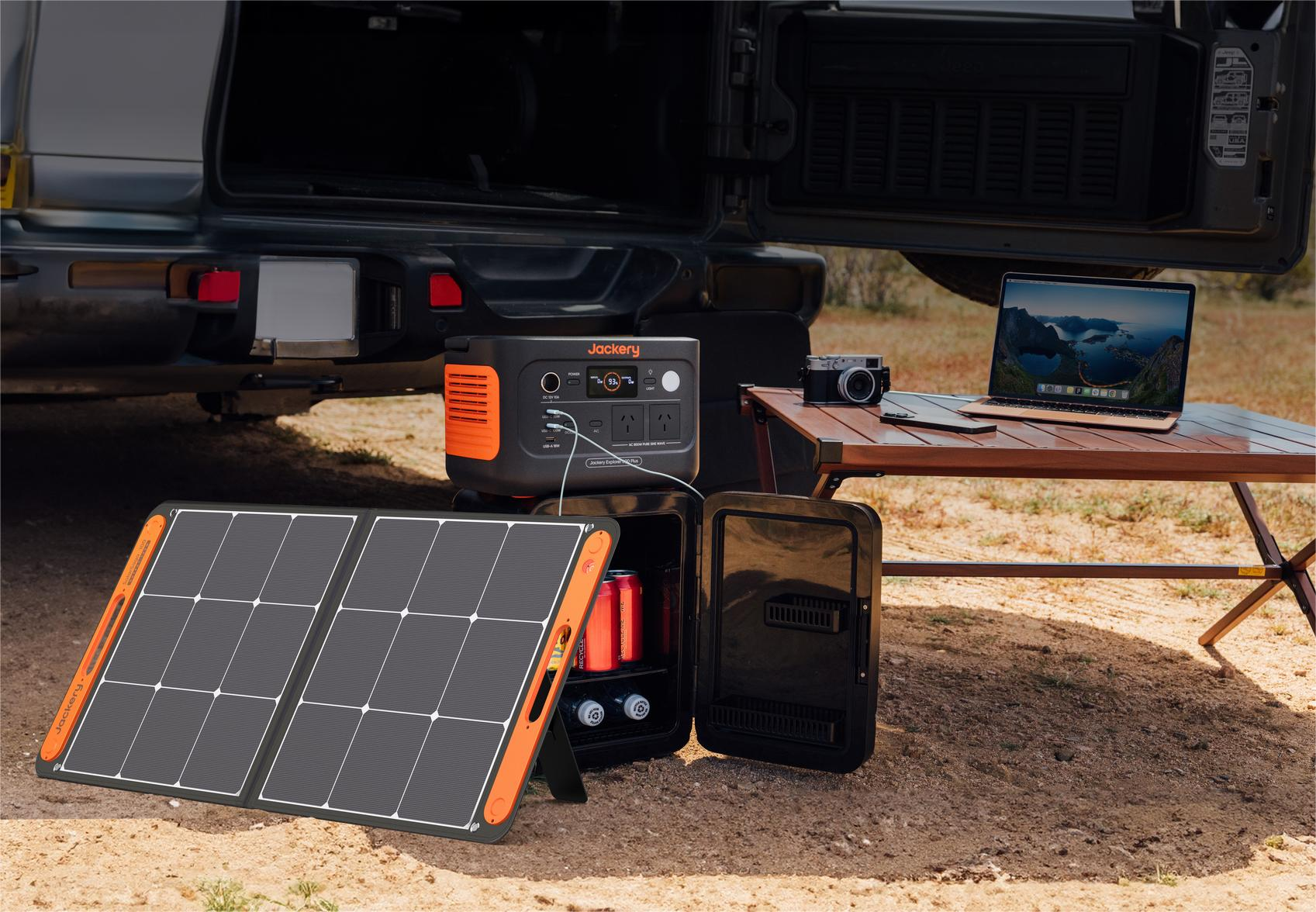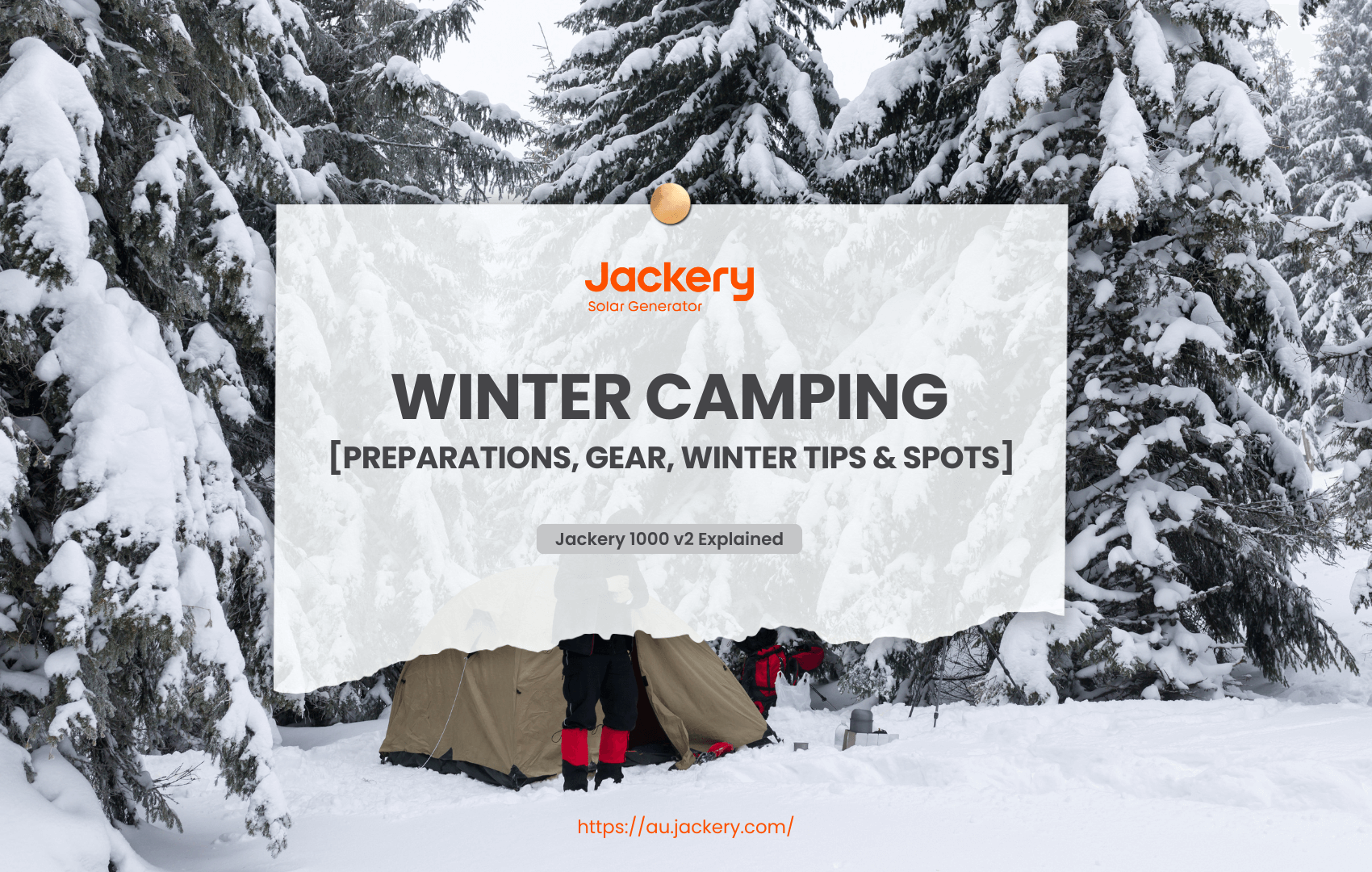|
Key Takeaways: |
|
- Winter camping in Australia can bring you unforgettable memories because of its unique scenery. - It's essential to prepare appropriate gear, clothing and equipment to ensure your safety and comfort, especially for camping in the winter. - Remember to be aware of health risks and fire regulations in advance for your safety. - This guide helps you choose the best tent with the most suitable material and provides tips to stay warm. - We recommend the Jackery Solar Generator 1000 v2 and 600 Plus for charging various sizes of camping fridges. |
Why Is Winter Camping Popular in Australia?
While some people may find camping in the winter intimidating, Australia has several benefits that make it a fantastic experience. Many parts of Australia experience mild winters, making it the perfect camping season because there are fewer people and more serene settings.
In addition, your camping trip will have an air of magic due to the splendour of the winter scenery, such as the Great Ocean Road or the Snowy Mountains. Furthermore, winter sunsets often feature the most breathtaking hues that sweep across the sky.
Here are a few solid arguments for Australian winter camping:
Silence: During the winter, there are often fewer campers, so you'll frequently be completely secluded—You frequently have a more isolated camping spot, which may be pretty romantic, because there are fewer campers during the winter. Take advantage of this inherent romanticism and enjoy your significant other during a winter camping trip in July. Cosy up by the cosy campfire!
Cheaper: You may frequently acquire your campground for a lot less money in the winter than in the summer because fewer people camp during that time!
You'll witness a more significant influx of animals during winter when camping. The winter months provide barren trees that, in the summer, frequently obstruct your view of wildlife, and the lack of campers doesnct deter it.
How to Prepare for Your Winter Camping?
The following are the tips and steps to prepare for winter camping in Australia.

Choose Your Campsite Location Wisely
It seems reasonable that you will lose heat fast if you park yourself amid a wind-swept field with no shelter from the outside. This is a mistake that novice campers should avoid at their own risk, as it leaves them vulnerable to wind, rain, and inadequate protection from the coldest weather.
Think carefully about where to set up your tent once you've reached your location. Avoid being in valleys or depressions that trap the colder air (not to mention the rain); in the winter, avoid large lakes and rivers that may retain the cold air close by rather than drive it away. Stay near dense vegetation or trees that can offer some shelter.
Winter Camping Essential Checklist
Backcountry camping in the winter needs a little more and different tools than backpacking in the summer. Make sure you don't forget anything important by using this handy plan while you pack.
Shelter and Sleeping Equipment: Despite the mild winters in Australia, every camper knows it's best to be prepared! After all, having a suitable place to sleep and sufficient shelter is essential for every outdoor explorer. We advise being particularly cautious to ensure your sleeping arrangements are cosy enough if you're wondering how to stay warm when camping.
|
Winter Camping Shelter & Sleeping Gear |
||
|
Camping Tent |
Camping Pillow |
4-Season Sleeping Bags |
|
4-Season Swag |
Camping Stretchers |
Foam Camping Mattress |
|
Thermal Reflective Blanket |
Electric Blanket |
Electric Hand Warmer |
Clothing and Accessories: When you pack appropriate clothes, you may adjust your wardrobe by adding or removing layers based on the outside weather, so you're always ready for anything. Lower temperatures, stronger winds, more fog, rain, frost, or even snow are all signs of wintery weather. We recommend having the following outfit alternatives on hand.
|
Clothing & Accessories |
||
|
Waterproof Jacket |
Waterproof Pants |
Warm Jumpers |
|
Insulated Vest |
Thermal Underwear |
Waterproof Gloves |
|
Thick Warm Socks |
Sturdy Shoes |
Beanie |
|
Scarf |
Gaiter |
Sunnies |
|
Lip Balm |
Toiletries |
Feminine Products |
Cooking and Fire-Starting: Being organised and making sure you have everything you need to create a hot, filling supper is always rewarding. You may find the following cooking and fire-starting supplies useful, depending on your specific situation:
|
Winter Camping Cooking Equipment |
||
|
Camping Stove |
Pots |
Pans |
|
Cutlery |
Carving Knives |
Plates & Bowls |
|
Mugs |
Thermos |
BBQ Grill |
|
Cooking Utensils |
Campfire |
Campfire Cast Iron Press |
|
Fridge |
Fresh Meal Prep |
Packaged Food |
|
Water Bottles |
Water Purification |
Firelighters |
|
Kindling |
Firewood |
Matches |
Navigation and Emergency: Campers must stay alert to their surroundings in case of emergency. In unforeseen circumstances, having enough supplies for navigation and recovery might be crucial, especially if you're out in the cold and need to return to the shelter quickly.

Australia generally receives ample sunlight, even in winter. A Jackery Solar Generator allows you to harness this free, renewable energy to power your devices, reducing your reliance on traditional fuel generators or limited campsite power. We advise keeping the following close at hand:
|
Winter Camping Navigation & Emergency |
||
|
GPS |
Compass |
Map |
|
Vehicle Repair Gear |
Whistle |
Duct Tape |
|
Chargers |
Radio |
Satellite Phone |
|
Flashlight |
Headlamp |
Multi-Tool |
|
First Aid Kit |
Wet Wipes |
Jackery Solar Generator |
Jackery Solar Generators for Winter Camping
Camping in the winter is an exciting way to connect with nature, but it requires cautious planning due to the cold. Your ideal partner is a Jackery Solar Generator, which keeps your camp toasty and operational by supplying electricity for portable stoves, lights, and heated blankets.
Jackery allows you to take in the peace of winter scenery without compromising comfort. No matter the season, enjoy the great outdoors and use solar panels to recharge your generator during the day. Jackery Solar Generators, especially models like the Solar Generator 1000 v2, are designed to operate in low temperatures. Some models can even function in environments as cold as -20°C (-4°F) or even -40°F.
Solar panel efficiency can sometimes be affected by snow or overcast conditions, but solar panels work more efficiently in colder temperatures (as long as there's sunlight). Jackery units often utilise LiFePO4 batteries, which are renowned for their durability and long lifespan, even in varying temperatures. Here, we recommend Jackery Solar Generator 1000 v2 and 600 Plus for winter camping.
Jackery Solar Generator 1000 v2
The Jackery Solar Generator 1000 v2 is a strong contender for winter camping in Australia. With a 1070Wh capacity, the 1000 v2 offers a good amount of power for essential winter camping devices. This can comfortably run electric blankets, small portable heaters, camp lights and more.

The 1000 v2 utilises LiFePO4 (Lithium Iron Phosphate) battery. While all batteries experience some reduced performance in cold temperatures, LiFePO4 batteries generally outperform traditional lithium-ion (NMC) batteries. They maintain more capacity and voltage retention, making them a more reliable choice for Australian winter camping, where temperatures can drop significantly, especially in alpine regions or inland areas.
While it's always recommended to charge LiFePO4 batteries above 0°C (32°F) to prevent damage, the LiFePO4 chemistry is generally more forgiving in colder charging conditions compared to NMC batteries.
The 1000 v2 is noted for being 20% smaller and 10% lighter than comparable 1kWh models, weighing approximately 11 kg (24.3 lbs). This makes it more manageable to transport to and from your campsite, especially if you're hiking or dealing with rough terrain.
It features multiple output ports (AC, USB-C, USB-A, 12V DC), allowing you to power a variety of devices simultaneously. The 100W dual PD charging for USB-C is excellent for fast-charging modern electronics.
- 10.8 kg | 30.4Ah/35.2V DC (1,070Wh) | 1,500W Output, 3,000W Surge
- 59-min Emergency Super Charging capability from 0 to 100%
- USB-A/C ports, up to 100W dual PD charging
- UPS ≤20ms seamless power switching
- LiFePO4 battery for 4000 cycles up to 10 years of daily use
|
Jackery Solar Generator 1000 v2 Working Hours |
|
|
Portable Fridge (60W) |
15H |
|
Camping Light (30W) |
19.5H |
|
Electric Blanket (150W) |
5.3H |
|
Kettle (800W) |
1.1H |
|
Coffee Maker (550W) |
1.5H |
(*The working hours are only for reference; the actual working hours depend on your usage.)
Jackery Solar Generator 600 Plus
The Jackery Solar Generator 600 Plus is your ideal companion for outdoor escapades. Equipped with a 632Wh battery capacity and an 800W output, it quickly powers everything from camping lights to coolers. Weighing just 7.3 kg and featuring a foldable handle, this compact powerhouse is designed for maximum portability, ensuring you stay connected wherever your adventures take you.

Pair it with the high-efficiency 100W Bifacial Solar Panel for sustainable, on-the-go charging. With a solar efficiency rate of 23%, it ensures a fast and eco-friendly power source for your devices. Whether camping, hiking, or working outdoors, the Solar Generator 600 Plus ensures reliable energy throughout your journey.
Built with a robust LiFePO4 battery, the Solar Generator 600 Plus offers 4000 charge cycles and retains 70%+ capacity for long-term durability. It's perfect for weekend warriors and seasoned explorers, providing dependable power for years of outdoor fun.
- High-Level Outdoor Durability
- 800W Output and 632Wh Capacity
- Explorer 600 Plus Weighs just 7.3 kg (16.1 lbs)
- Full Charge in 1 Hour with Emergency Super Charging Mode
- LFP battery with a 4000-cycle lifespan
- UPS functionality with a switch time of less than 20ms
|
Jackery Solar Generator 600 Plus Working Hours |
|
|
Camping Light (3W) |
54H |
|
Coffee Maker (550W) |
1H |
|
Electric Blanket (150W) |
3.4H |
|
Electric Hand Warmer (20W) |
25.3H |
|
Mobile Phone (29W) |
27 Times |
(*The working hours are only for reference; the actual working hours depend on your usage.)
5 Best Winter Camping Spots in Australia
Don't let the cooler weather stop you from enjoying the outdoors. These are the best places to camp in the winter in Australia. People usually think of camping as something to do in the spring or summer. Still, Australia is fortunate to have weather that allows people to enjoy the outdoors, even in winter.

1. Beachcomber Holiday Park, NSW
Location: Blackfellows Point Rd, Potato Point NSW 2545
Phone: +61 2 4473 5312
Website: Beachcomber Holiday Park
Rate: 4.7/5
At the centre of Potato Point's attractions, Beachcomber Holiday Park is surrounded by the Eurobodalla National Park. This gorgeous stretch of coastline is easily accessible from the vacation park and features pristine beaches, historic headlands, and river estuaries. A couple of family sites sleep ten people, while most may accommodate up to six. While most sites are unpowered, a few are powered by solar energy and can provide electricity for your lights, TV, radio, battery charger, and small fridge.
2. Booti Booti National Park, NSW
Location: 4374 The Lakes Way, Booti Booti NSW 2428
Phone: +61 2 6591 0300
Website: Booti Booti National Park
Rate: 4.3/5
This campground is surrounded by the type of lonely, white-sand beaches Australia is famous for, as well as Booti Booti National Park, whose name comes from a term that means "plenty of honey" in the local Worimi Aboriginal language.
The NSW National Parks system includes Foster's Ruins Campground, characterised by paperbarks and cabbage tree palms in the wintertime. Before retiring to your campground, take in the breathtaking headlands, lovely beaches, cool forests, and 11 km of estuary beachfront. The location has picnic tables, grills, drinking water, restrooms, and showers.
3. Bullara Station, WA
Location: Burkett Rd, Exmouth Gulf, WA 6707
Phone: +61 8 9942 5938
Website: Bullara Station
Rate: 4.7/5
The vast outback sheep and cattle property known as Bullara property is reachable by car from the Ningaloo Sea's beautiful shores. When winter arrives, there will be a variety of birds to see and flowering wildflowers. There are also pet cows, kangaroos, and lambs to keep the youngsters entertained.
Take a 4WD trip to discover the history, geology, and identification of animal footprints in the area. Choose from a selection of powered and unpowered (no generators) campsites in this wilderness camping paradise. You may use the camp kitchen, showers, toilets, and standard fire pits.
4. Rollingstone Beachfront Resort, Qld
Location: 367 Hencamp Creek Rd, Rollingstone, QLD 4816
Phone: +61 7 4770 7277
Website: Rollingstone Beachfront Resort
Rate: 4.5/5
It makes sense to travel up north if you like your winter vacations to be warmer. The Rollingstone Beachfront Resort is conveniently located just over 50 50-minute drive north of Townsville, and with over 300 days of sunlight annually, it fulfils all the requirements for warmer weather. This 32-acre tropical paradise has all you need for a luxurious camping vacation, including a beachfront site.
It's a kid's dream, with a playground, basketball hoop, activity room, bike track, and jumping cushion. Second, camping puts you near some of the region's most breathtaking scenery. There are spots directly on the beach or next to the lake home to barramundi. Lift off a line and elevate your feet.
5. Tjuwaliyn (Douglas) Hot Springs Park, NT
Location: Douglas Hot Springs, Hayes Creek, Northern Territory, 0846, Australia
Phone: +61 8 8999 4555
Website: Tjuwaliyn Hot Spring Park
Rate: 4.4/5
Situated 200 kilometres south of Darwin, this paradise of thermal springs is the epitome of what it means to "escape to the tropics," surrounded by gigantic paperbark trees, twisted pandanus, and soft sandy beaches. Where the cold river water meets the hot springs water, rest your weary bones and watch quolls, bandicoots, and flying foxes while fish nibble at your toes.
You can find a pit toilet, shower, fire pit, picnic tables, barbeques, and drinking water at the unpowered campsites. You won't have to miss a second of the breathtaking winter scenery from May through September, the ideal months to visit. Make sure to check in advance for campsite closures.
Essential Tips for Winter Camping
It doesn't matter how beautiful the sights are if you have to spend the night sleeping in the cold or shivering in the freezing temperatures. Don't forget to bring the right gear, whether you're cross-country skiing or snowshoe hiking. The following are some of the tips for winter camping.

Tip 1: Understand Health Risks
Make sure you promptly recognise the telltale signs of cold weather, typically hypothermia or frostbite.
|
Hypothermia |
The signs of moderate hypothermia include loss of coordination, shivering, mood swings, especially quiet, and low body temperature. It can be addressed by applying someone else's body heat, working out for short bursts of time, and changing out any wet clothes for dry ones. |
|
Frostbite |
Frostbite typically affects the hands, feet, nose, or ears. Greyish-yellow or white skin, as well as skin that feels scratchy, rough to the touch, or numb, may be indicators of the condition. Avoid direct heat sources, such as fire or camping cooking equipment, when treating frostbite. Take yourself out of the spotlight and put it to use. |
Tip 2: Fire Safety Precautions
Campfires are almost a need since they provide warmth and the ideal camp atmosphere. However, to avoid mishaps and save the environment, it's crucial to take the following precautions:
|
Check Fire Regulations |
Check for any current municipal fire prohibitions and rules before starting a fire. |
|
Use Designated Fire Rings or Pits |
Use the specified fire rings or pits provided by the campground rather than digging a new one. |
|
Clear the Area |
Make sure there are no dry leaves, branches, or other combustible objects near the fire pit that might catch fire. |
|
Extinguish Properly |
Use water or soil to completely extinguish the fire before departing the campground or retiring for the night. Ensure the fire is extinguished and that it is chilly to the touch. |
Tip 3: Emergency Preparedness
To ensure a trouble-free camping trip, you must be ready for anything that could come up. The following advice on emergency preparedness:
|
Communication |
Keep your cell phone charged at all times. If you live in an area with spotty reception, consider investing in satellite communication equipment. Some unique gadgets from Garmin potentially save your life. |
|
First Aid Kit |
Assemble a comprehensive first aid kit that includes all the necessary materials and prescription medications for common illnesses and injuries. To see which kit we prefer, see above. |
|
Emergency Shelter |
Carry an emergency shelter in case you need to take cover from severe weather, such as a tarp or a lightweight tent. |
|
Emergency Contact |
Give a dependable friend or relative access to your camping schedule and emergency contact information. |
Tip 4: Respecting Wildlife And The Environment
Australia is home to a diverse range of unusual animals, and it is essential to protect their natural habitats. Here are some tips for being a conscientious camper:
|
Observe from a Distance |
Admire nature from a distance and stay away from bothering or approaching animals. For a closer view, use a zoom lens or binoculars. |
|
Minimise Noise |
Reduce noise if you don't want to disturb the wildlife or other campers. Since animals are most active at dawn and dusk, silence is significant. |
|
Dispose of Waste Properly |
Use appropriate waste management techniques by packing out your rubbish or using designated containers. Food leftovers and packaging should never be left behind. |
|
Stay on Designated Paths |
Stay on designated pathways to avoid damaging delicate plants or causing soil erosion. This is particularly crucial in alpine areas, like Tasmania and the Snowies, where flora develops very slowly. |
How to Stay Warm When Winter Camping?
You can't avoid it; camping in the winter means cold weather. While it might be cold, don't let that stop you from going on that overnight ski tour or snowshoe trip. With the right tips and tricks, you can camp in the winter and stay warm while getting the rest you need to go all out on your next day's task.

1. Choosing The Right Camping Tent
Consider the tent's rating when purchasing a tent that can withstand any situation. Most of the time, you want to seek a tent certified for four seasons and can handle a lot of rain, snow, and wind.
Size: A smaller tent is preferable for camping in the snow unless you're camping with a large group. The reason for this is thermal insulation, which reduces the amount of heat transported between objects with various temperatures and in thermal contact. A giant tent requires more heating, whereas a smaller room can be heated and insulated far more readily.
Material: Most of the time, nylon and polyester tents offer sufficient waterproofing, which makes them perfect for hikers and anyone who wants to lighten their pack weight. Because polyester is thicker than nylon, it lasts longer. Winter camping aficionados like polycotton tents because they are more rigid, lighter, and often have a higher waterproof rating than cotton tents.
2. Ways To Heat Your Tent
The following are the two basic ways to warm up your tent.
Using Hot Bottles: You only need water, fire, and a camping kettle. If there isn't a nearby water source, you may always utilise the snow around you in place of your water supply. Be careful to add a small amount of snow to your kettle at a time, and wait until it has melted before adding more. The compacted snow will hollow down, and you risk scorching your kettle if you add it all at once.
Electric portable heaters are an excellent way to generate heat without using fuel, such as gas. However, if you're not staying in a campground with electricity, go for an electric heater that runs on batteries and pack the appropriate kind of batteries.
3. Tips On Staying Warm When Winter Camping
When you find a suitable location to set up camp and pitch a tent, you must remove any perspiring layers of clothing, including your socks. Throw on a puffer jacket to seal in the heat and ensure you stay toasty and warm after changing into dry clothes.
Apply Heat Packs: Using a pack of hand warmers or heat packs is a fantastic alternative for staying warm. When trekking or attempting to remain warm at a campground, you can tuck some heat packs into your pocket, insert a pack of hand warmers into your gloves or mittens to keep your fingers warm or stuff a couple of heat packs into your sleeping bag to keep warm throughout the night.
Ensure You Can Make a Fire: Being able to make a fire is essential for staying warm and dry while winter camping. Finding dry firewood and kindling outdoors can be challenging while camping in the snow.
Winter Camping FAQs
The following are the frequently asked questions about winter camping in Australia.
1. How cold is too cold for winter camping?
40 degrees Fahrenheit. It's crucial to understand when camping in the cold might not be safe. Generally, temperatures between -1 and -4 degrees Celsius (30 and 40 degrees Fahrenheit)[i] are considered too low for camping, especially for unprepared or inexperienced campers.
2. How cold is too cold to sleep in a camper?
You can use virtually any RV in the winter, even in freezing weather. In most cases, RVs can keep you comfortable in temperatures higher than freezing. All you need to do is be ready with the appropriate equipment, knowledge, insulation, and attitude.ng to get by for a year or so, and you're not thinking about the long term. It is horses for courses.
3. Do you need a 4-season tent for winter camping?
A four-season tent is advised in areas with strong winds and lots of snow. To survive strong wind gusts and substantial snowfall, 4-season tents are constructed with stronger poles and heavier materials than 3-season tents. Additionally, they have less mesh, and to prevent whirling snow from getting inside, the rainflys reach near the ground.
Final Thoughts
Aussies adore going camping in the winter, whether rain, hail, or sun. Overcoming the winter months and having an incredible time in nature creates lifelong memories. However, it's simple to forget that temperatures in Australia may drop sharply, given our reputation for pleasant weather and expansive sandy beaches. With the right equipment, this guidance will help you stay warm and safe on your next winter outdoor activity.

